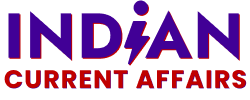Date: June 16, 2025
📌 Introduction: Why Snack Nutrition Matters
Snacking is a ubiquitous part of daily life in India—from school lunches and office tea breaks to evening hunger pangs. But unhealthy snacks loaded with trans fats, refined sugars, and excess salt are fueling lifestyle-related illnesses such as obesity, diabetes, and hypertension. In response, the Ministry of Health and Family Welfare has launched a nationwide Campaign on Snack Nutrition aimed at encouraging responsible snacking habits. The initiative targets urban youth, working adults, school communities, and caregivers to promote awareness and healthy food choices.
🎯 Objectives of the Campaign
- Educate consumers on unhealthy snack ingredients like trans fats, added sugars, and low fiber content.
- Encourage behavior change by promoting nutritious options such as fruits, nuts, millets, and homemade snacks.
- Empower informed decisions through label literacy and awareness of nutritional content.
- Collaborate with stakeholders —from schools and workplaces to food manufacturers—for wider reach.
🔍 Core Elements of the Snack Nutrition Campaign
1. Visual “Snack Fact Boards”
Pilot programs at select hospitals, schools, and workplace canteens feature “Snack Fact Boards” detailing calories, fats, sugars, and salt content of common snacks. These charts use color-coded alerts (e.g., “High,” “Moderate,” “Low”) akin to nutritional traffic lights, empowering instant judgment by consumers.
2. Digital Toolkit & Mobile Initiatives
A micro-site and mobile app provide:
- Quick snack logs and health tips
- Healthy snack recipes (e.g., roasted chickpeas, smoothie bowls)
- Weekly challenges such as “Nuts instead of chips”
3. Educational Outreach in Schools
Interactive workshops help students:
- Identify unhealthy packaged foods
- Learn the role of portion control
- Try simple, healthy snack-making activities
4. Influencer Partnerships
Nutritionists, fitness coaches, and chefs share reels and tutorials on low-sugar, high-protein snacking. These short, engaging videos keep messaging relatable and catchy.
5. Industry Alliances
The Food Safety and Standards Authority of India (FSSAI) encourages food brands to use “front-of-pack labelling” and reduce unhealthy ingredients. Manufacturers are incentivised to reformulate snacks and feature healthier ingredients like millets, pulses, and seeds.
🌱 Strategic Importance for Public Health
| Concern | Initiative Goal |
|---|---|
| Rising NCDs | Reduce intake of empty calories |
| Sugar and Salt Overload | Increase consumer awareness & intake of healthy alternatives |
| Obesity in Youth | Encourage schools to act as change agents |
| Burden on Health Systems | Promote prevention over cure |
With lifestyle diseases costing India billions and causing early mortality, embedding smart snacking could yield tremendous public health gains.
🚀 Behavioural Insights & Consumer Response
Using behavioral economics, the campaign emphasizes:
- Attention-grabbing visuals
- Weekly “Snack Swap” challenges
- Peer support via social media groups using hashtags like #SnackSmartIndia
Early pilot data shows a 25% increase in healthy snack choices among students—an encouraging start.
🎓 Role of Schools & Workplaces
Schools
- Mandated use of Snack Fact Boards in canteens
- Inclusion of nutrition-based activities in curriculum
Workplaces
- Health audits for office snack corners
- Promotion of fresh fruit baskets and low-cal options
- Inclusion in corporate health insurance incentives
🧠 Expert Opinions
Dr. Neha Desai, Nutritionist:
“Switching even one unhealthy snack to fruit or nuts daily can reduce obesity risk significantly over time.”
Mr. Rajiv Mehta, FSSAI Expert:
“Transparent front-of-pack labelling will push companies to reformulate while helping consumers choose wisely.”
🔗 Digital Reach & Engagement
- Campaign website averages 10,000 monthly visits
- 50,000+ mobile app downloads with daily engagement
- Instagram reels garner ~100,000 weekly views
- Volunteer influencer programs with nutrition educators amplify reach across states
📊 Long-term Goals & Evaluations
The campaign runs in three phases over 18 months:
- Phase I – Awareness and label literacy through pilots
- Phase II – Expansion to city-wide rollouts with partners
- Phase III – Policy push for mandatory labelling and formulation standards
Ongoing evaluation assesses:
- Snack preferences in schools
- Packaged snack redesign success
- Reduction in trans fat/sugar in common snacks
Mid-term assessments suggest a 15% rise in healthy snack adoption, validating the campaign’s impact.
✅ Conclusion: Toward a Healthier Snacking Culture
The Campaign on Snack Nutrition is a timely, cost-effective public health intervention. By combining consumer education, behavior nudges, and regulatory incentives, India is taking an intelligent step toward curbing lifestyle diseases. Smart snacking can soon become a societal norm—and a foundational shift for improved population health.

